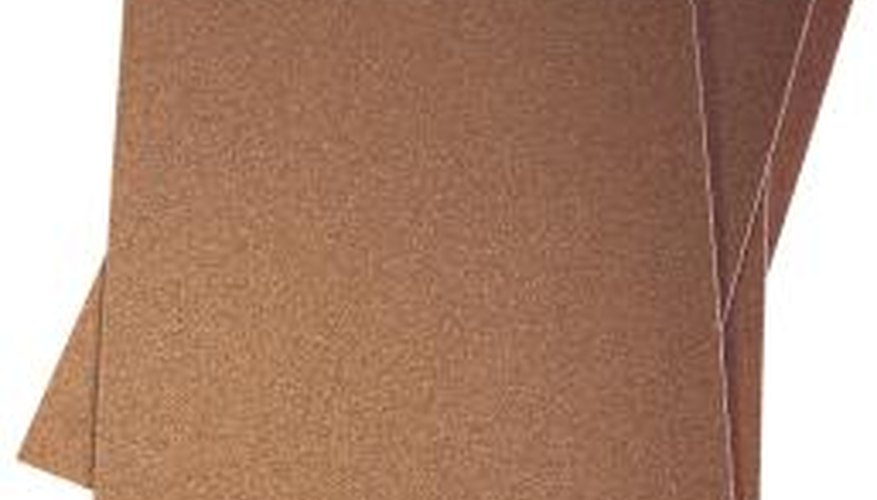Bakelite is a type of nonporous plastic. If you'd like to paint a surface composed of Bakelite, consider an important point. Also known as polyoxybenzylmethylenglycolanhydride, Bakelite is ill-suited for adhesion and will reject painted finishes unless it is conditioned through abrasion. Once the Bakelite is abraded, it will accept paint. Apply a lasting enamel, using the proper application tools, or noticeable brush marks will show up in the painted finish.
- Bakelite is a type of nonporous plastic.
- Once the Bakelite is abraded, it will accept paint.
Abrade the Bakelite to promote adhesion. Sand the surface with 180-grit sandpaper until it feels rough.
Wipe the Bakelite with a tack cloth.
Protect areas adjacent to the Bakelite by covering them with blue painter's tape. Cover areas beneath the Bakelite with heavy-duty fabric dust sheets.
- Wipe the Bakelite with a tack cloth.
- Protect areas adjacent to the Bakelite by covering them with blue painter's tape.
Coat the sanded Bakelite with latex primer, using a two-to-three inch polyester brush. Brush vertically, smoothing any sags and runs if they become apparent. Allow the Bakelite to dry for two hours.
Wash your brush with water.
Coat the primed Bakelite with acrylic enamel using the polyester paintbrush. Brush vertically, smoothing any sags and runs if they become apparent. Allow the Bakelite to dry for two hours.
WARNING
Don't paint unprimed Bakelite, or peeling will result. Don't prime unasanded polyoxybenzylmethylenglycolanhydride, or flaking will result. Don't use latex paint on Bakelite, or the finish will not remain durable. Never use a nylon brush to paint Bakelite, or the finish will dry flawed.
